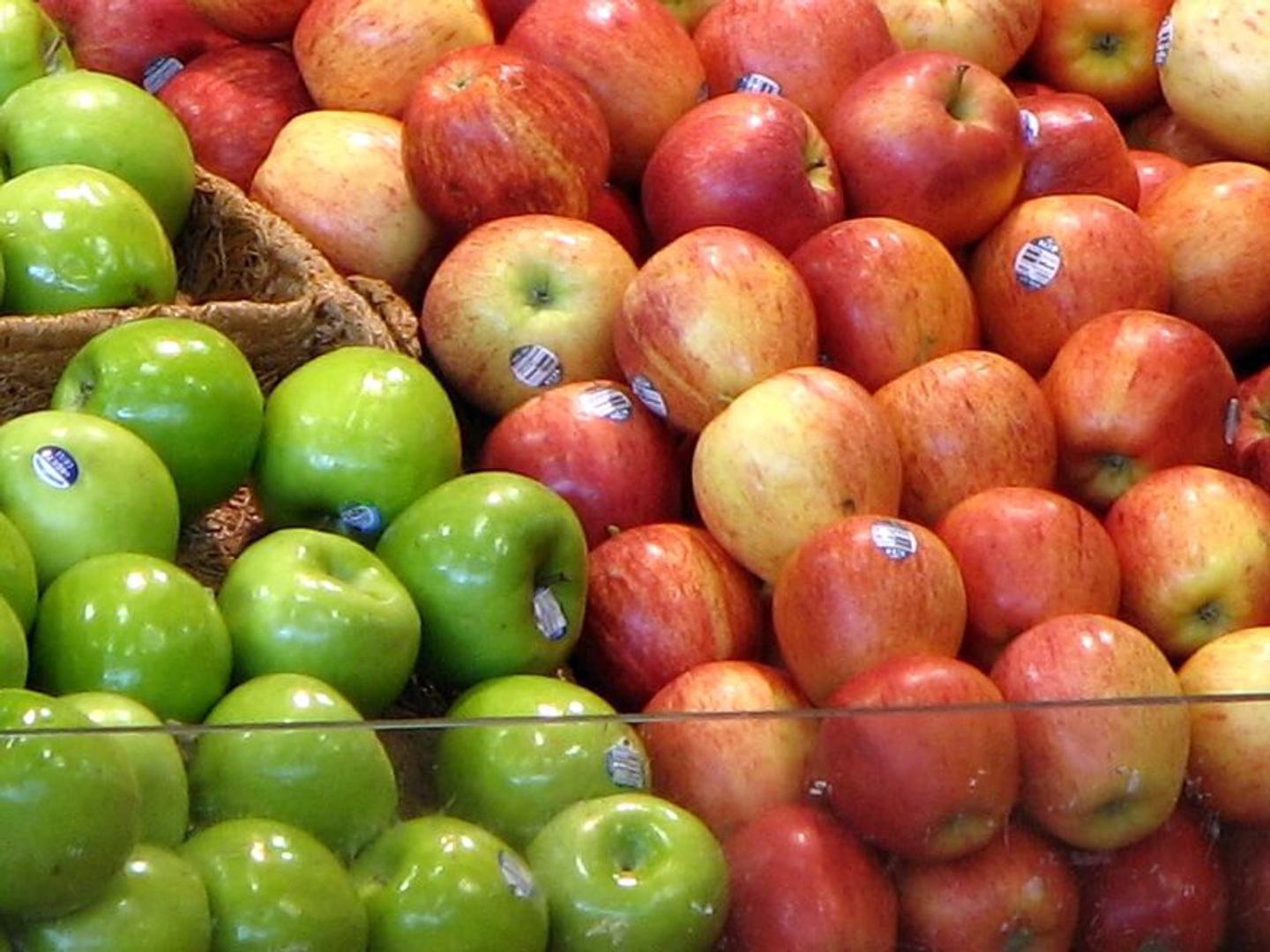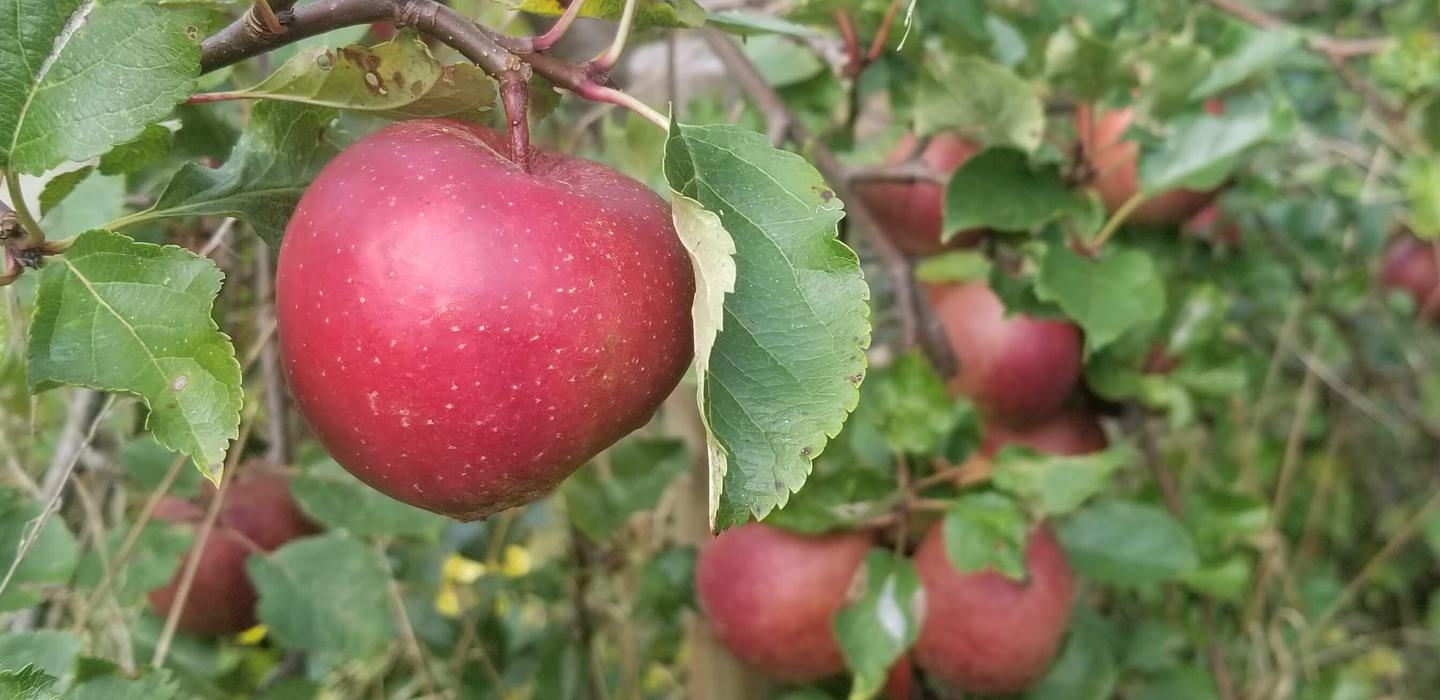Guides
Choosing apple trees
Which apple tree would you choose to plant? (A) Bramley Seedling, (B) Cox's Orange Pippin, (C) Winter Gem or (D) Dunkerton Late Sweet?
We'd hazard a guess that if you wanted a cooking apple, it'd be A, and if you were after an eater, you might head straight for the familiar B. However there are a host of other cooking and eating varieties that might be more productive, easier to grow and just as delicious, dare we say!
Varieties C and D may sound appealing, for example, but you probably haven't heard of them. Winter Gem is tasty and disease resistant, so well worth considering as an eating apple. Meanwhile you might not actually find Dunkerton sweet enough to eat - it's been selected as a cider apple. Cider apples tend to be higher in tannins and sugar than your supermarket apples, giving the fermented drink its rich, tangy flavour.
Chew Valley Trees stocks dozens of apple varieties - most of which you will never see on supermarket shelves. So how to navigate this great range? Read on for some tips.
Eating, cooking, dual purpose, cider
Eating apples, also known as dessert apples, are just that: good to eat. They range from sweet to sharp in flavour, juicy to dry, crisp to soft. Some have thinner skins than others, which can be appealing for children.
Varieties: Beauty of Bath, Cox's Orange Pippin, Discovery, Egremont Russet, Elstar, Katy, Laxton Superb, Red Falstaff, Saturn, Scrumptious, Spartan, Sunset, Winston, Winter Gem, Worcester Pearmain
Cooking apples like Bramley usually have a firm texture and sharp flavour that requires added sugar to make them palatable. They may keep their shape better than eating apples when cooked, hence looking beautiful fresh out of the oven, baked with cinammon and raisins - mmm, an autumnal aroma indeed!
Varieties: Arthur Turner, Bramley Seedling, Tom Putt
Only have space for one tree? You don't have to choose between a cooking and eating variety. Dual purpose apples are suited to either cooking or eating.
Varieties: Blenheim Orange, Charles Ross, Howgate Wonder, James Grieve
Finally, cider apples, as mentioned above, are ideal for making a tasty alcoholic beverage. You can use dessert apples - for example Katy is well known for producing a good cider - but they don't generally give the depth of flavour that comes from a nice bitter cider apple. Most ciders use a blend of varieties.
Varieties: Camelot, Dunkerton Late Sweet, Sweet Pethyre, Tom Putt

Considerations
When choosing your variety, other things you will want to look for in the description are:
Disease resistance - some varieties like Cox are unfortunately prone to scab but most types we supply have been selected for disease resistance
Weather resistance - if late frosts are the norm in your location, look for later flowering or resistant blossom. Some varieties are naturally hardier than others.
Keepers vs eat-up fresh - some varieties keep well while others are best eaten from the tree
Pollination groups - some apples are self-fertile so will fruit even without others nearby (though cropping is usually better if there are); others need at least one other variety to permit cross pollination and fruiting. Triploids like Bramley and Blenheim Orange need two other non-triploid varieties nearby. (Triploid: having three sets of chromosomes rather than the usual two.) Their pollen is sterile so will not pollinate other trees.
Some apple trees flower earlier than others and we therefore divide them into pollination groups, as the flowering must overlap to permit pollen transfer from one tree to another. If you are planting two trees with the intention of them pollinating each other, make sure they are from the same or an adjacent group (i.e. 2 and 3). Trees from groups 1 and 3 will not be able to pollinate each other.
Don't worry too much about this, though, as pollinators such as bees can travel between two and six miles, so the likelihood is that there will be another apple tree somewhere to provide your pollination services! Crab apple trees also pollinate apple trees.
Season - apples also ripen at different times, some early (August - early September) and some late (late October - November). For a steady crop over late summer to late autumn, plant a range of early, mid and late season croppers.
Appearance - you might also be interested in the size of apples (some are naturally huge, some petite), the colour of the skin and flesh and flower colour (usually white or pink). Some trees are naturally a little smaller or larger than others, e.g. Bramley is large and vigorous; Discovery is relatively small, despite being on the same rootstock (see our guide to rootstocks).

Some recommendations
If you like the flavour of Cox: Laxton Superb, Sunset, Winston
For juicing: Charles Ross, James Grieve, Katy
If you like a drier apple: Egremont Russet, Blenheim Orange, Laxton Superb
Children tend to like: Katy, Scrumptious
Heavy crops: Elstar, Katy, Red Falstaff, Spartan, Sunset
Show-stopping, large fruits: Howgate Wonder
Apples ready early in the season: Arthur Turner, Beauty of Bath, Discovery, Worcester Pearmain
Frost resistant: Arthur Turner, Beauty of Bath, Discovery, Egremont Russet, Howgate Wonder, James Grieve, Katy, Laxton Superb, Red Falstaff, Saturn, Scrumptious, Spartan, Sunset, Worcester Pearmain
Some excellent keepers: Blenheim Orange, Bramley, Howgate Wonder, Laxton Superb, Red Falstaff, Spartan, Winston, Winter Gem